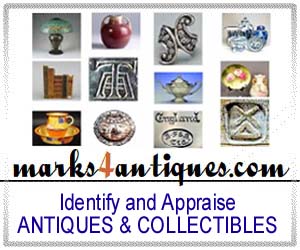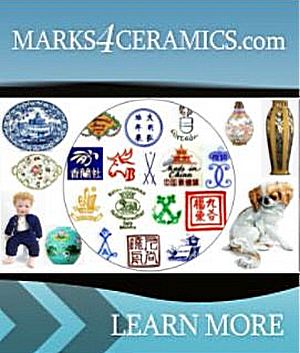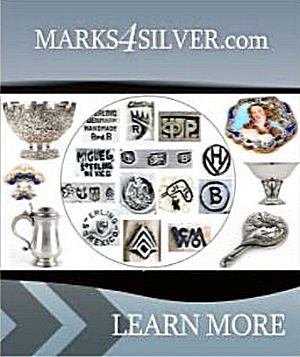IDENTIFYING PSEUDO-MARKS ON ANTIQUE SILVER:
Distinguishing Between Genuine and Imitation Hallmarks
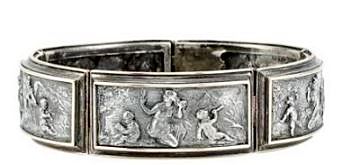
When it comes to antique silver, the term "pseudo-mark" or "pseudomark" can be a bit misleading. While it may imply a fake or counterfeit mark, the reality is that many of these marks were officially registered as genuine makers' marks. So, what exactly are pseudo-marks and why were they used on sterling silver?
Pseudo-marks on silver, also referred to as imitation marks, were used by many companies and silversmiths worldwide and were meant to intentionally resemble British sterling hallmarks, with the primary goal of making items appear as though they were made in Britain. This practice was particularly common in the 19th century, when British silver was highly prized and sought after.
But not all pseudo-marks were created equal. Some were blatant attempts to deceive buyers, while others were more subtle and difficult to detect. It is also important to note that outside of the UK, pseudo-marks were not only used on Silverplate but also on Sterling Silver. For our marks4silver research section, we've compiled a comprehensive list of authentic and imitation marks, including pseudo-marks, from silversmiths and silverware manufacturers around the world. Our goal is to provide a valuable resource for those looking to research and authenticate antique and collectible silver.
So, whether you're a seasoned collector or just starting out, understanding the history and significance of pseudo-marks on antique silver can help you make informed purchasing decisions and add valuable pieces to your collection.
History of Pseudo-marks
To fully appreciate the significance of pseudo-marks on antique silver, it's important to understand their history. British laws were extremely strict regarding the use of official silver hallmarks, primarily to enforce and track the payment of taxes and duties on precious metals. As a result, pseudo-marks were rarely used within Britain. However, items made abroad with pseudo-marks led to the law requiring that all precious metals, including silver articles, be re-assayed upon entry into the UK and prior to sale. This law has been in effect since the 1840s and continues to this day.
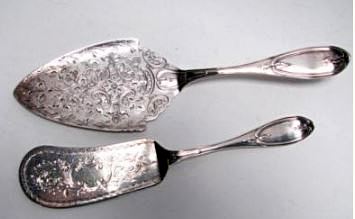
To comply with this law, imported silver items to Britain were required to bear a letter "F" for "Foreign" until 1904, which was then replaced by the numerical value of their silver content within an oval outline. This process of re-assaying ensured that none of these items bore any marks resembling authentic British hallmarks that could mislead potential buyers as to their origin and also guarantee that they are of at least 92.5% silver purity.
Most silver pseudo-marks are found on items made outside Britain, particularly by 19th century American silversmiths and silverware companies. These marks were used to quickly gain acceptance in the domestic US market, which at that time was dominated by British silver imports. However, the use of pseudo-marks was not limited to the US. Other countries and regions also imitated European hallmarks for the same purpose of inspiring confidence in the quality of their products.
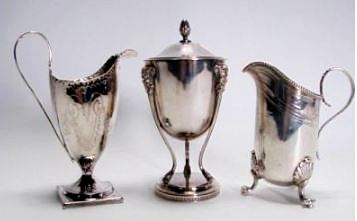
It is important to note that the use of pseudo-marks was not necessarily a deliberate attempt to sell an inferior product. On the contrary, the vast majority of wares produced by early American silversmiths and manufacturers were of high quality and very comparable to their British counterparts. In fact, many early American silversmiths actually emigrated to the US from Europe, many establishing and operating reputable companies, thus practically continuing their work and transferring their advanced skills and methods to the New World.
Use of Silver Pseudo-marks Around the World
Today, most pseudo-marks used by American silversmiths have been registered or documented, and have become the primary means by which we can identify early US silversmiths. However, a few short-lived silver companies or minor silversmiths that used pseudo-marks in 19th century America remain anonymous. To add to this, some retailers, especially in New England & New York, also used pseudo-marks on silver articles that were made to order by various unnamed local silversmiths & workshops. In America, items signed with pseudo-marks date ca 1830s – 1920s, with a peak of around 1850s – 1890s.
Canada was also prolific in using such marks, and the official Canadian hallmark was not established until 1946. This encouraged the use of silver pseudo-marks in Canada for a bit longer as compared to the US, in this case until the mid-20th century. Many "Canadian" silver manufacturers were actually American companies that had established operations and subsidiaries, particularly in Ontario, Quebec, and British Columbia.
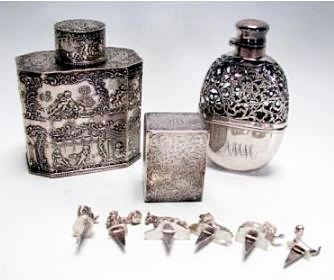
Silversmiths in Hanau, a region of Germany, are particularly known for using pseudo-marks on their wares from the 1850s to 1920s, which are often a combination of French, German, and UK hallmarks. However, due to the relatively small number of silversmiths in the region, most of these Hanau pseudo-marks on silver are currently documented and correctly attributed.
In China, especially in the Canton region and Hong Kong, silversmiths and jewelers produced items with pseudo-marks that resembled UK hallmarks, primarily from the 1880s to 1910s. This was because many craftsmen in the area were either British expatriates or local apprentices trained by English artisans. However, most of these items also had a small mark in Kanji that identified them as made in that region.
Pseudo-marks also occasionally appear on late 19thC to early 20thC silver coming from South Africa, India, and Australia, which had strong connections to the British mainland or are still part of the Commonwealth.
Conclusion
When appraising or researching old silver with pseudo-marks, they can be evaluated the same way as any other antique by identifying them and using comparables to assess their value. However, it is worth noting that pseudo-marks were occasionally applied to inferior products by unscrupulous merchants. Nonetheless, most of the items with pseudo-marks are genuine works of art and many are of Sterling Silver, having significant decorative appeal and value as collectibles. The only exception is on silverplate that was systematically marked with pseudo-marks, especially on 19thC American specimens and imports from other countries. However, most of these have been documented and are available for researching present-day collectible or antique silver.
Unlock the true value
of your collection with our comprehensive research guides from identifying makers' marks to appraising all kinds of
antiques and collectibles.
Our up-to-date information will give you an accurate understanding of your items' worth. Don't miss out on this
valuable resource - visit our research tools today!
Search our price guide for your
own treasures

